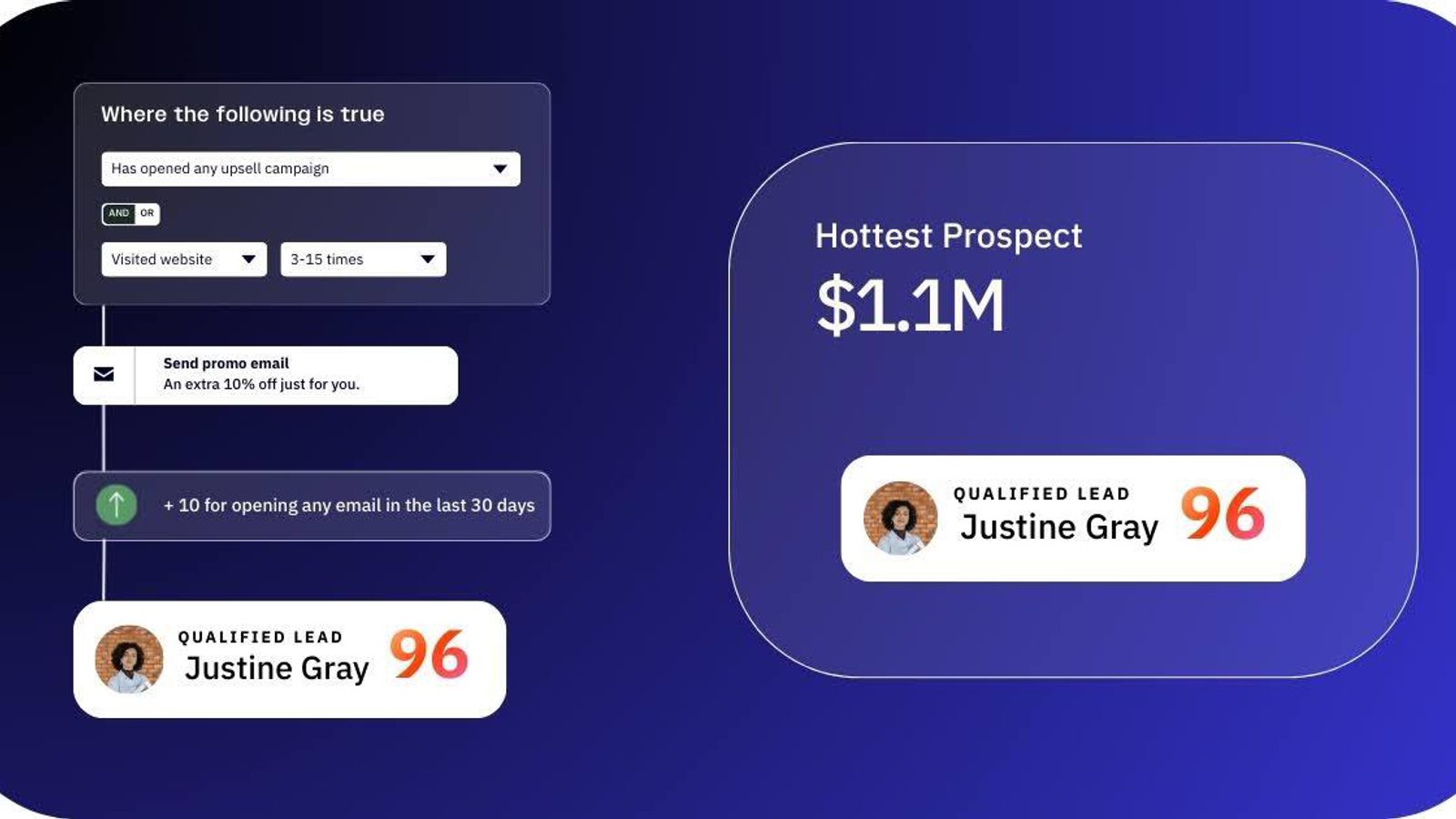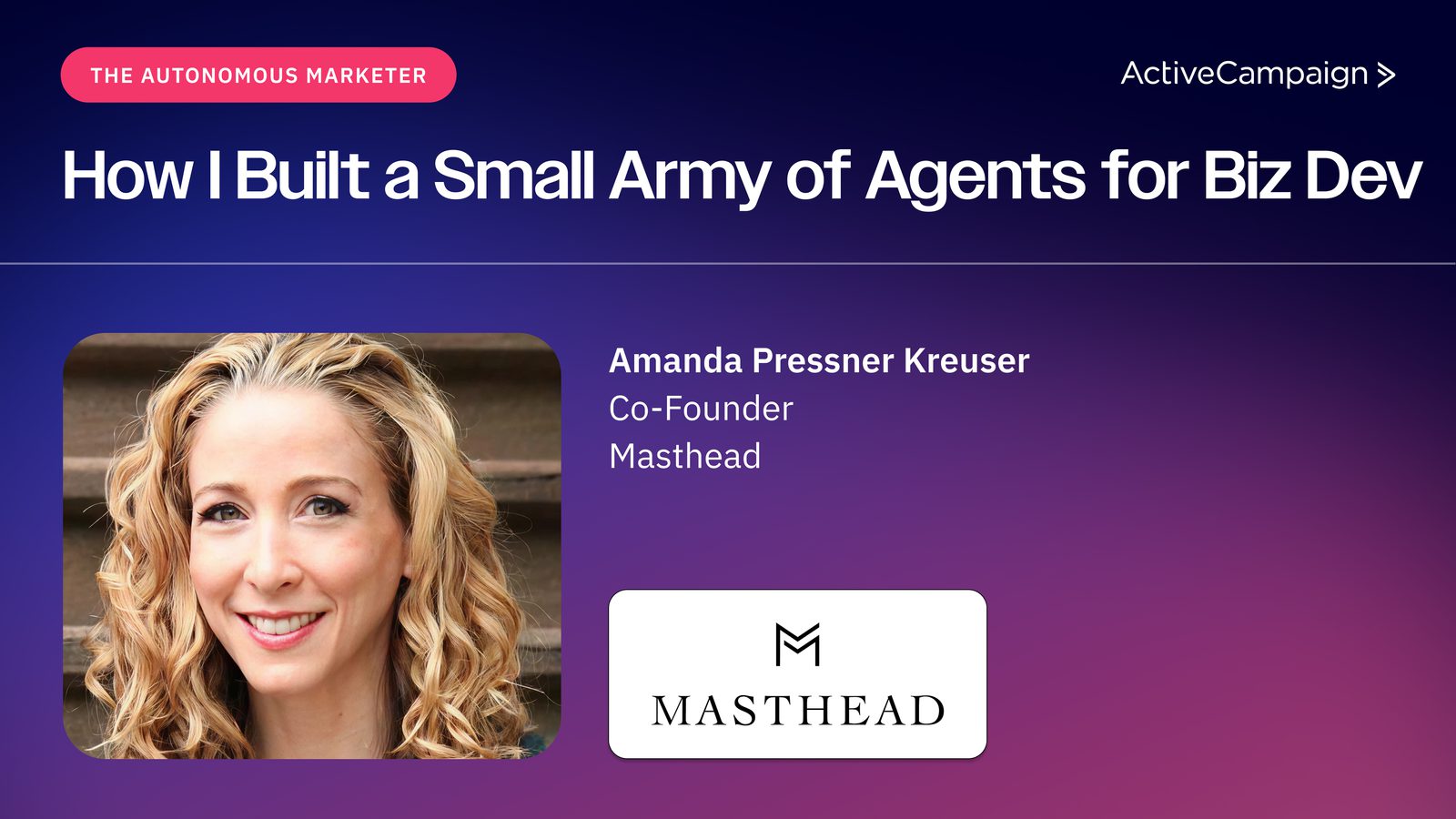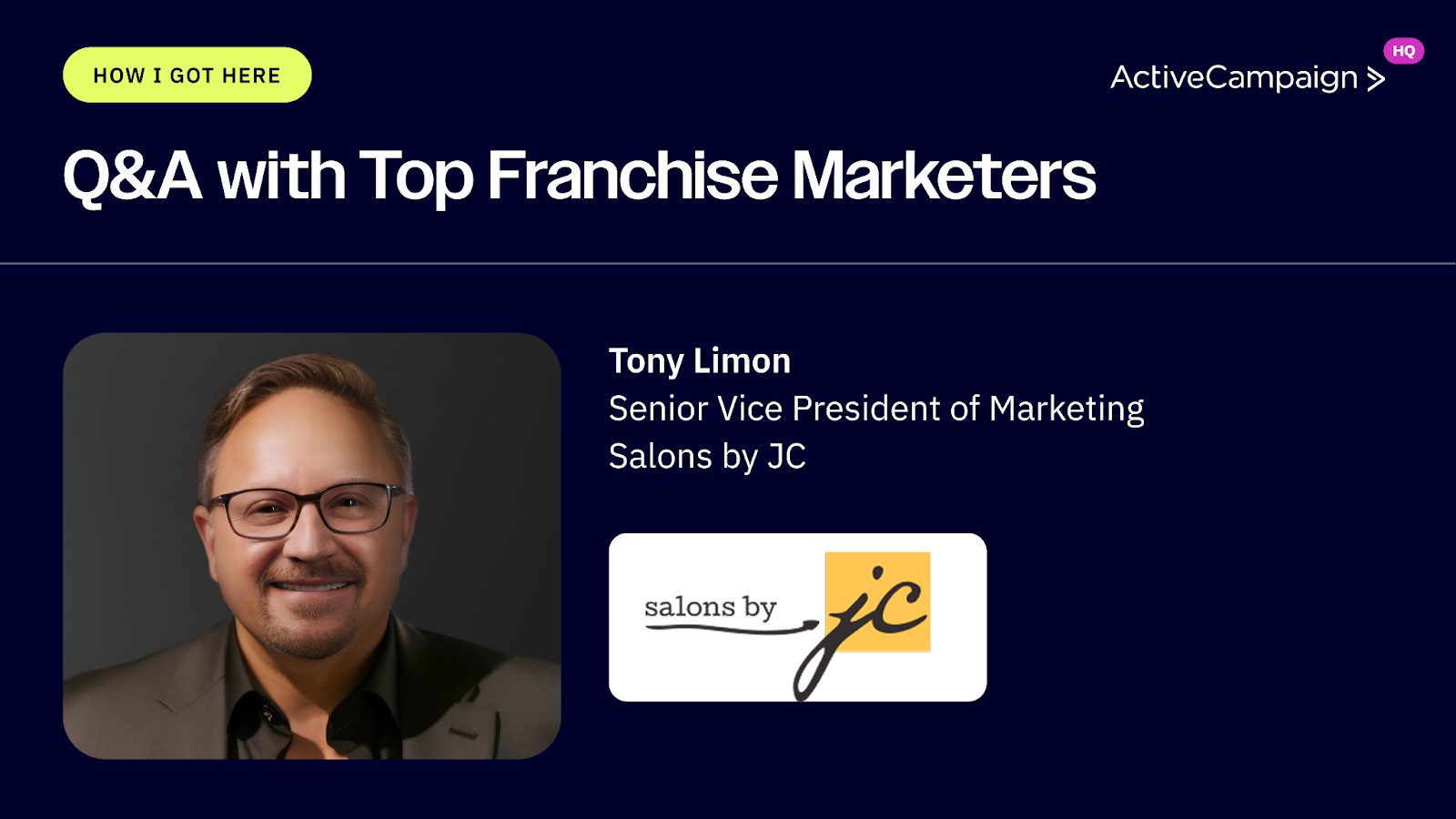“I need some time to think about it.”
“It’s too expensive.”
“Just send me some information.”
If you’ve ever worked in a sales role, you know that every prospect has an objection. There’s some hesitation or drawback that keeps them from signing on the dotted line.
Building awareness and generating leads is a challenge in itself, but you face even more challenges once you begin to have sales conversations with potential customers.
What is objection handling?
Throughout the sales process, you’re guaranteed to encounter objections, questions, and pushback. It’s up to you to overcome these objections and ease your prospect’s concerns. Over time, you’ll identify similar objections and learn how to maneuver and respond (we also have a free objection handling template to help get you started).
In many cases, you can turn your prospect’s sales objections to your advantage — it’s just a matter of knowing how to respond.
Sales objections almost always fall into 1 of 6 categories:
- Price
- Competitor/Relationship
- Time/Resources
- Timing
- Product/Value
- Dragging their feet
Within these categories, there are various sales objections that are specific to your prospect’s business or current situation. In this post, you’ll learn 33 common sales objections — and how to overcome them.
- “It’s too expensive.”
- “We don’t have the budget”
- “I can get a cheaper version somewhere else.”
- “We’re being downsized/bought out.”
- “I don’t like being locked into a contract”
- “I’m currently under contract with someone else.”
- “I’m happy with [competitor]”
- “We’re doing fine in this area/I’m okay with the status quo.”
- “Competitor X says [false statement about your products].”
- “I’ve been burned before.” / “I had a bad experience with a similar products/services.”
- “We only work with people we know.”
- “You don't understand my challenges. I need help with Y, not X.”
- “You don’t understand my business.”
- “I don’t have the time/resources for this right now.”
- “We don’t have the capacity to implement the product.”
- “We don’t have the business plan.”
- “I’ll have to talk to my team and get back to you.”
- “I can’t sell this internally.”
- “I’m not ready for a buying conversation.”
- “Call me back next quarter.”
- “Sorry, I have to cancel. I’ll get back to you with a better time.”
- “XYZ feature is a deal-breaker” / “We need XYZ features that aren’t included.”
- “I don’t understand the value and I’m too busy to think about it.”
- “Does your product do X, Y, and Z?”
- “I don't see the potential for ROI.” / “I don't see what your product could do for me.”
- “Your product doesn’t work with our current set-up.”
- “Your product is just too complicated.” / “I don't understand your product.”
- "Hello, you've reached [Prospect's Name] ... " (The cold shoulder)
- “Just send me some more information.”
- “How did you get my information.”
- “It’s just a fad.”
- “[Decision-maker] isn't convinced.”
- “I’m not authorized to sign off on this.”
Common sales objections based on price
Price is the most common type of sales objection.

“What’s this thing going to cost me?” — Every prospect ever
Prospects who have every intention of buying will still object to the price and say it’s too expensive, or hint that they’d like it for less.
Can you blame them? We all want to get our money’s worth.
You can’t give the product away for free or give every prospect a significant sales discount. So what can you do? Below are 4 common price objections and strategies to overcome them.
1. “It’s too expensive.”
Note that this objection is not the same as “We don’t have the budget.”
Your response to this objection puts you in 1 of 2 positions:
Beware of defending the price of your offering! If you use your price as a selling point, you reduce your role in the buying process. The price of your product isn’t a feature or a benefit.
Stay away from saying things like:
- “We’re cheaper than (competitor)”
- “(Product price) really isn’t that much when you think about it.”
- “I don’t think it’s too expensive.”
This can add tension and an argumentative tone to the conversation — and you never want to argue or debate with a prospect. Not to mention it doesn’t add anything to the conversation.
Instead, focus on the value and benefits of your offering. Circle back to what the prospect gets from your offering, and the problems or pain points it solves.
Transition away from price with responses like:
- “This is going to free up a lot of time for you and your team to focus on more important tasks.”
- “You’ll never have to worry about (pain point) again.”
- “Think about the time it takes to do (task) now, because you’re not going to have to worry about that anymore.”
- “It takes 3 people to get this done right now, and you have to make sure it gets done correctly. If you implement our solution it’ll just be done. And it will be right every time.”
2. "We don't have the budget."
Remember that you’re in this conversation for a reason: Your prospect has a pressing issue that your offering can solve. Their problem needs an eventual solution, and waiting to find that solution will only prolong their pain — and could even make it more severe.
Turn back to the value of your offering, and sell your prospect on a future in which their current problem no longer exists — because your solution solved it.
Help your prospect build a case to secure the necessary funds from their executive sponsors, or create a mutual plan to continue the conversation when they do have the budget.
3. “I can get a cheaper version somewhere else.”
This objection requires a bit of detective work. There are a few explanations and it’s important to find out what you’re dealing with.
Are you selling against a competitor? What other providers is the prospect considering? Are they looking to create a bidding war to manufacture a discount? If this is the case, present them with the price you’re willing to accept and be willing to walk away if they require you to go lower.
Sometimes all it takes for your prospect to take action is the possibility that you’ll walk away. This negative reverse selling tactic can work if your prospect is fishing for a discount.
Does your prospect think that a cheaper version of your solution has what they need? If so, dig into the comparison. Return to the value of your offering and what makes it distinct from other, cheaper alternatives. Sell your prospect on the value that your solution provides (and that the cheaper version does not).
4. “We're being downsized/bought out.”
Unfortunately, this objection usually means the end of the road. If your prospect no longer has a business, then you no longer have a deal. End the conversation politely, professionally, and with gratitude for the opportunity. Wish them luck in the future, and let them know that you’d be happy to pick the conversation up again if the situation changes.
Common sales objections based on a competitor/relationship
If you’re in the sales process with a potential customer, chances are they’re shopping around and talking to a few of your competitors, too. They might even have a solution in place already!
Prospects in this situation have been through the sales process before. They might have had a bad experience, or have an existing relationship with another business.
Below are 9 common sales objections you might hear from prospects who have talked to a competitor or have an existing relationship with another company.
5. “I don’t like being locked into a contract.”
This objection requires some digging. If your prospect has a real need, and a real interest in your solution, then the issue is most likely cash-flow or budget-related. Offer some alternatives to your usual billing cycle. If your typical contract is annual, offer a monthly or quarterly option.
You can also ease their concerns with an explanation of the flexibility you offer. Some great ways to move the conversation forward include:
- Prorated rates for a longer contract
- Stipulations on getting out of the contract
- General transparency around the billing process
6. “I’m currently under contract with someone else.”
When a prospect says this, it usually means they feel trapped. This gives you an opportunity to come to the rescue. Offering a discount can help mitigate the loss from breaking a contract, or you can reiterate how the value and the potential ROI of your solution can make up for whatever they stand to lose.
Before you do this, be direct and ask your prospect why they’re so eager to get out of their current contract. This helps you better understand the relationship you’re beginning with them and what kind of customer they will be.
7. “I’m happy with [competitor].”
Take a moment to ask how they benefit from working with your competitor. This information can give you an opening to discuss where you offer more value, a lower price, or another advantage over the competition.
This objection can also help you better understand the prospect’s needs and situation based on which competitor they use.
8. “We're doing fine in this area. / I’m okay with the status quo.”
Just because things are good doesn’t mean they can’t be better. Get your shovel ready because it’s time to dig in. This objection means you need to do some additional qualifications.
Find out more about your prospect’s situation, process, and results. This helps you identify areas that your product/service can improve beyond their status quo.
9. “Competitor X says [false statement about your product].”
Confidently and calmly tell your prospect, “That’s not true.” Often, that will be enough to get past this objection. If it’s not (and even if it is), set the record straight about the falsehood and move on.
Be careful not to return the slight: Never talk down your competition. This is a turn-off for many potential buyers, and you don’t want to appear petty.
10. “I’ve been burned before.” / “I had a bad experience with a similar product/service.”
This objection is a big opportunity.
First thing first: Empathy. Let your prospect know that you understand, and don’t be quick to move forward with the rest of your pitch. Spending time to make your prospect feel heard and important is a huge boost for your relationship and establishing the trust needed to move forward. Ask about what went wrong, and pay attention to what they tell you.
Once you’ve empathized with your prospect, let them know how their experience with you and your offering will be different than their previous experience. Be specific, and use their own words when explaining the differences. This helps cement their trust further and improves your chances of closing the deal.
11. “We only work with people we know.”
We like what we know; it makes us feel comfortable. This is completely reasonable, and you should treat it as such. However, that’s not to say you can’t turn this into a positive — because you can.
Do some light qualification and see what their current vendor gives them. Look for opportunities in what you can offer that their current provider can’t. Sometimes we feel obligated to continue working with someone because of a long or personal relationship — it’s your job to show the prospect that there are better options out there.
And, if you’re feeling zesty, say something along the lines of, “Well now we know each other, so I guess we’re on the list.”
12. “You don't understand my challenges. I need help with Y, not X.”
Empathy first! Don’t disagree with your prospect and turn the discovery conversation into a debate. If that happens, you can rest assured that any potential for future business is gone.
Instead, make sure they feel heard. Use phrases like, “It’s my understanding that…” instead of “I assume that…” and ask open-ended questions that let them describe their problems and situations to you. Then, use their own words to restate their challenges and your solution.
Many arguments and miscommunications occur because of slight changes in our wording. Be mindful of this — it can mean the difference between a burned bridge or a new customer.
13. “You don't understand my business.”
Instead of getting defensive, respond with curiosity — even if you understand their business completely and have experience in their industry. Agree with them and let them know that you want to learn about their business, then ask them to tell you about it.
“I’m sorry, you’re right. I’d love to learn more about what you do. Can you help me understand?”
Phrasing your question this way plays to your advantage. Humans love to give advice because it makes us feel important. Asking your prospect to help you understand can make your prospect view you in a more positive light, and opens the door to a more productive sales conversation.
Common sales objections based on time or resources
Your potential customers can only get so much done in a day. Depending on their current situation, they might use time or resources as an objection.
People are busy, and it’s important to remember that your prospects have other job responsibilities to take care of. You’re bound to come across sales objections based on a lack of time or a shortage of resources — below are 5 of the most common and how to overcome them.
14. “I don’t have the time/resources for this right now.”
This objection is extremely common, and for good reason — everybody is busy, and everybody procrastinates. Your natural response is likely something like, “When would be a better time to talk?”
Fight the urge to say this. This gives your prospect the opportunity to say “Never.” or “I’ll reach out when I’m ready.” (SPOILER: They’ll never be ready. And if they are, they won’t reach out.)
Instead, take this opportunity to find out what they do have the time or resources for. Learn about their priorities and their plans for the near future. This helps you qualify the business and might reveal an opportunity to connect their priorities to your solution.
This also gives you insight into the type of content or value you can provide in the meantime. Consistent, relevant follow-up is key to building a relationship and catching them at the right time.
15. “We don't have the capacity to implement the product.”
Implementing a new solution or tool takes time and effort. It’s much easier (and more appealing) to do nothing. This objection usually comes up when a prospect doesn’t fully understand the implementation process. Give them some context.
First, tell them you understand their concern. Don’t just rush into explaining how it’s “not that difficult”, they don’t want to hear that.
Explain the process, how long it takes, where your company helps, and how quickly they’ll see results. Be specific, and don’t lie or exaggerate.
Finally, explain how your product will save them time and money in the long run. Your solution will give them back the capacity they don’t have right now!
16. “We don't have the business plan.”
This objection is usually code for, “I haven’t thought about it.” or “I don’t want to think about it.”
Dig in a little more. Ask them if they experience the issues that your solution solves and how they deal with those issues currently. Sometimes, the reason a plan doesn’t exist is because they don’t know that the problem exists.
17. “I’ll have to talk to my team and get back to you.”
Ah, a classic. This objection usually means 1 of 2 things:
- They’re procrastinating
- They’re not the right person to talk to
You can work around this objection by asking to have another conversation with their team. This lets you connect with the right person — and lets your prospect be the hero who found the needed solution.
18. “I can't sell this internally.”
The good news is that they don’t have to do any selling — because you can. After all, you’re selling your product right now!
Before asking for a meeting with decision-makers, ask your prospect why it’s a tough sell. Ask them about their concerns.
Always circle back to the values and benefits of your solution. If you have strong counterpoints to the objections and drawbacks, your likelihood of making the sale skyrockets.
Common sales objections based on timing
You know what they say (whoever ‘they’ are):
“Timing is everything.”
Whoever said this never worked as a sales rep. Most of your sales prospects will tell you that it’s not the right time.
Fortunately for you, the perfect time doesn’t exist. So when your prospects push back on you because of timing, you’ll know what to say. Below are 3 common sales objections that have to do with timing.
19. “I'm not ready for a buying conversation.”
Your prospect is more ready than they think. Remember, you’re at this point in the sales conversation for a reason. They have a need, a problem, or an interest in your product. It’s time to get creative. Chances are, they need a compelling reason to decide on your product. They need an offer that’s just too good to refuse.
So what can you do?
According to Harvard professor Gerald Zaltman, 95% of human decision making takes place below the conscious level, meaning we make 95% of our decisions based on emotion. Work to incorporate an emotional appeal into your offer.
One effective strategy for these situations is to create urgency. If you can offer a limited discount or offer (such as added features, a complimentary strategy call, or a month free), that can move the sales process forward.
Humans hate to lose out on anything. We take action to avoid it. As Daniel Kahneman said in his 1979 paper on Prospect Theory, “Losses loom larger than gains.”
This behavior is known as loss aversion and it’s a powerful emotional driver that emerges when people encounter a limited time deal.
Remember, it’s “ready, set, go!” not “set, ready, go!”
20. "Call me back next quarter."
Why put off until tomorrow what you can get done today?
This objection is a variation of the classic, “Now's not the time” objection. Only this variation gives you a more specific timeline of when to reach out.
Your prospect hopes that this objection will brush you off or deter you. But this objection (like most objections) is an opportunity in disguise to give you more information about their business and current situation. Ask your prospect,
“What’s going to change next quarter?”
This question helps give you insight into the prospect’s current priorities and what problems they’re actively working to solve. This information can be critical to your qualification process and can open the door to connect your solution to what they’re working on now.
21. "Sorry, I have to cancel. I'll get back to you with a better time."
Don’t let them off the hook that easy! Instead of giving them the power to reschedule the meeting, dig in and reschedule while you’re on the phone. Get them to commit to another time now, so they aren’t able to disappear without rescheduling.
If you can, ask them when they have 15 minutes later that day. Instead of continuing to put it off, reschedule as quickly and as close to the original meeting date as possible.
Common sales objections based on product/value
If someone doesn’t understand something right away, their first instinct is to dismiss it or stop trying. Sometimes you have to go the extra mile to help your prospects understand what your product does — and what it will do for them.
Your sales leads might try to rush you off the phone by saying they don’t get it, or that your offering doesn’t do what they need it to. While common, these sales objections are tougher to handle than most and can test your resolve as a salesperson.
Below are 6 common sales objections based on the product or the value, and how to overcome them.
22. “XYZ feature is a deal-breaker” / “We need XYZ features that aren’t included.”
This objection gives you a chance to highlight if your product can work or integrate with another solution. If you’re able to provide solutions that meet all but 1 of your prospect’s needs, suggest a product or service that can fill that gap to get around this objection.
Every company has different needs. Sometimes, if a company’s strategy hinges on a particular feature that you can’t provide, then your solution might not be a good fit. And that’s not always a bad thing!
Disqualifying a lead as a poor business fit can be a better option than forcing a square peg in a round hole. Oftentimes, that leads to a difficult customer relationship down the road.
23. “I don't understand the value and I'm too busy to think about it.”
This objection is a variation of #14 (“I don’t have the time/resources for this right now.”) but includes an opportunity to highlight the value of your product. The good news is that they don’t have to think about it. Because they’re on the phone with you.
Use this as an opportunity to dive in and show them the value of your offer. Work to set up a 15-minute call, or stay on the line and have that conversation now.
Asking your prospect what they do have time for gives you insight into their current situation and problems. Use that information to further communicate the value that your solution brings to those problems, or what’s next on their list.
24. "Does your product do X, Y, and Z?"
Be honest. If your product does those things, tell them it does. If it doesn’t, don’t lie.
If your product doesn’t do those things, instead of coming right out and saying “Nope!” push back and ask them why those things are important. If the reasons they want those features can be solved through another feature or method, pivot to that instead.
“We don’t do X, Y, and Z — but we can do A, B, and C, which yields the same result.”
Oftentimes prospects will say they need something simply because they think that they need it, they’ve been told that they need it, or they’ve heard something appealing about it. It’s your job to understand why and identify all available options for them to explore.
For example, companies serving a local area have heard about the benefits of SEO. They then feel like they need to rank for all sorts of industry-related keywords because... they think that they have to. The only problem is that even if they did rank for those keywords, they couldn’t service the majority of the potential clients because of their locality.
Find out why your prospect wants what they want. More often than not, you’ll find that it’s not what they need.
25. “I don't see the potential for ROI.” / “I don't see what your product could do for me.”
If a prospect raises this objection, it’s your time to shine. Your main job in selling your offering is to show your potential customer what you can do for them.
However, this objection can be a problem if you don’t fully understand your offering or the potential value of it. Study up on the benefits of your product or service, and be able to articulate them in a way that makes your potential customers the hero.
Don’t just rattle off the features or the shiny bells and whistle. That’s not what they’re asking for. Instead, focus on the benefits.
In other words, don’t sell the car — sell the freedom of the open road. Don’t sell the electric drill — sell the beautiful painting hung on the living room wall. Don’t sell the mattress — sell the feeling of a great night’s sleep.
Your prospect is King Arthur (the hero) and your product is Excalibur (the hero’s sword that makes them the hero).
26. “Your product doesn't work with our current set-up.”
Similar to objection #22 (“XYZ feature is a deal-breaker” / “We need XYZ features that aren’t included.”), this objection presents an opportunity to highlight the versatility of your offering and how it works with other tools.
In addition, you can take advantage of this response and learn more about their set-up. Dig in with questions like:
- “What other tools are in your current set-up?”
- “What do you use them for?”
- “How important are they to your overall strategy?”
- “What do these tools help you accomplish?”
Their responses might reveal hidden needs and use cases that your solution can solve.
Again, it might be the case that your product isn’t a good fit — and that’s okay! No one solution works for everyone.
27. “Your product is just too complicated.” / “I don't understand your product.”
If your prospect genuinely can’t understand what your solution does, it means 1 of 2 things:
- They might not be ready for it or be a good fit. It’s nearly impossible to be successful with a solution that you don’t understand.
- It’s an opportunity for you to help them understand through examples.
First, ask them which areas they’re unclear on. This helps them realize that they understand more than they think, and helps you pinpoint how to help.
If you know your product well, the first outcome will become apparent early in the conversation. If your potential customer can’t wrap their head around your solution after a few examples or applications, it’s usually a good indicator that your solution isn’t a fit right now.
Explaining your solution in terms of ideas and examples that they do understand might be what they need.
Use case and real-world applications are better than a long-winded explanation. They frame your solution in a way that the prospect does understand. Lean on these examples as you move the conversation forward.
Common sales objections when your prospects are dragging their feet
You know that thing on your to-do list that’s been there for weeks? That thing you know you’ll have to face eventually but you keep putting it off, wishing it would go away? The thing that gives you that lurch of dread in the pit of your stomach because you know you should just get started or get it over with?
We procrastinate even though we know how good it will feel when we get it done and cross it off the list.
These sales objections are the equivalent of that feeling.
You’re the thing that won’t go away — but you can use it to your advantage! It’s up to you to let your potential customer know how much better their lives will be when they can get it done and cross it off the list.
Below are 6 common sales objections you’ll face when your prospects are dragging their feet.
28. "Hello, you've reached [Prospect's Name] ... " (The cold shoulder)
While it may not seem like it, unanswered calls and emails are an objection. The best way to get around this is to continue reaching out, but always have something new to add.
Sending the same emails or leaving the same voicemails isn’t going to miraculously make your prospect appear, cash in hand.
The cold shoulder is an indication that you should switch up your approach and try a different angle. However, after several unsuccessful attempts, it’s probably best to move on.
29. “Just send me some more information.”
This is an old classic to get you off the phone. Don’t let them off the hook. Ask a follow-up question like:
- What information would be most helpful for you?
- What problems are you having that I could shed some light on?
- What are the biggest problems you’re having with (area)?
Their answer helps you be more deliberate in your follow-up and opens the door for additional qualifying questions. Many sales reps have pushed back on this objection and found an entire discovery conversation on the other end.
30. “How did you get my information?”
As long as you acquired your prospect’s information through an online form, an in-person conversation, an event, or a business card, you don’t have anything to worry about. Simply remind them how and where you got their information.
If you purchased a list or scraped an email address, well, you’re out of luck. Also — don’t do that. It’s illegal.
31. “It's just a fad.”
Prospects declare solutions are fads when they:
- Have no proof that the solution has measurable benefits
- Don’t understand the solution
- Haven’t seen examples of success with the solution
Solve these problems for them. Case studies, customer testimonials, examples, and metrics are your best friend in this situation. Offer social proof and measurable data that your solution works (and that other people like it!).
32. “I'm not authorized to sign off on this.”
Move to the next stage of the decision-making process:
“Not a problem at all, who would be the right person to reach out to?”
Work to get their contact information or offer to set up another conversation with both of them.
33. “[Decision-maker] isn't convinced.”
Get ready to fight for the deal.
If you’re this far into the process you’ve identified a business problem that your solution can solve. Your prospect is on your side but the decision-maker won’t move. Restate your offering’s benefits and future benefits. Bring in testimonials and social proof and be specific about the results.
Ask your prospect to set up a call with the decision-maker and state your case.
Unfortunately, not everything is meant to be, and deals end up lost. It’s hard to lose a deal you’ve invested significant time into, but it’s not worth wasting more time.
Conclusion: When in doubt, remember your ABC’s
If you’re selling anything, you’re guaranteed to face objections and questions. Sales objections are often opportunities in disguise, and your response to the objection makes all the difference.
You’ve probably heard the old sales platitude, “ABC: always be closing” — and while that’s a catchy thing to say, it’s also wishful thinking. The sales process doesn’t always work like that, and sometimes you’ll face a prospect’s sales objection that you’re not sure what to do with.
If that’s the case, remember a different kind of ABC:
- Authenticity: Be honest, tell the truth, and have an authentic, human interaction with your potential customers.
- Benefits: Sales reps have a tendency to run down the list of features, telling prospects all about what the product is and what it does. Instead, focus on the benefits. Use what the customer gets to overcome the objections, NOT what the product does.
- Clarity: If you’re faced with a difficult question or tough objection, it’s important to clarify. Ask a follow-up question to learn what the prospect is really looking for. Asking “Why…?” is a great way to find out what’s important to your prospect, and gives you some time to give them an effective answer.








